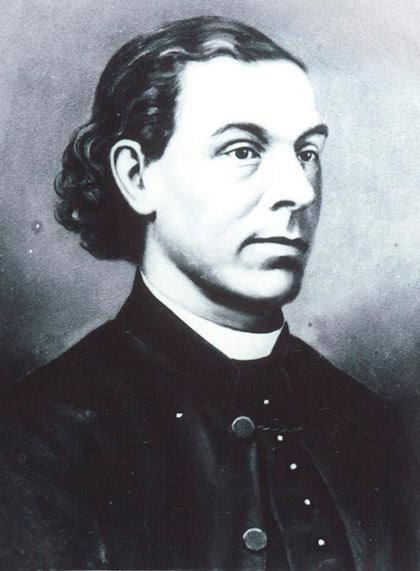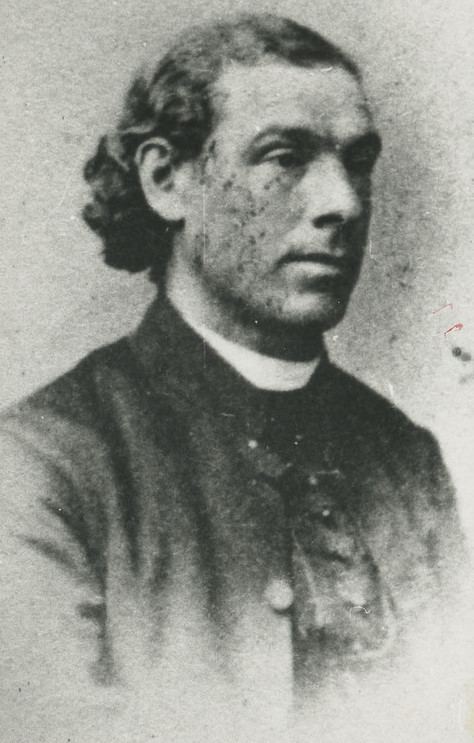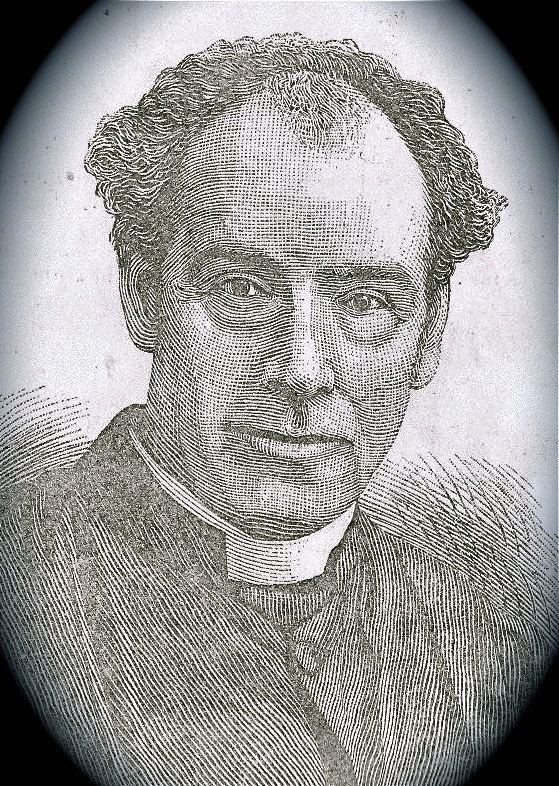Name Julian Tenison-Woods Role Priest | ||
 | ||
Parents James Tenison Woods, Q.C., Henrietta Maria Saint-Eloy Tenison Books The Cuyos Archipelago (China Seas) | ||
Organizations founded Sisters of St. Joseph | ||
Julian Edmund Tenison-Woods (15 November 1832 – 7 October 1889) was an Catholic priest and geologist, active in Australia. With Mary MacKillop (later Saint Mary MacKillop), he co-founded the Congregation of Sisters of St Joseph of the Sacred Heart at Penola in 1866.
Contents
- Early life
- Early career
- Priesthood
- Geological work
- Exploration
- Weakening health and death
- Commemoration
- References

Early life
Woods was born in London, the sixth son (of eleven children) of James Tenison Woods, Q.C., a sub-editor of The Times, and his wife, Henrietta Maria Saint-Eloy, née Tenison, daughter of the Rev. Joseph Tenison. Among his ancestors were several outstanding Irish Catholic and Anglican religious leaders. He attended Thomas Hunt's Catholic school, Kent House, Hammersmith, and, briefly, Newington Grammar School.

James Woods was a Roman Catholic, but apparently not a very strict one. His mother belonged to the Church of England and was of the same family as Archbishop Tenison, well-known around the beginning of the eighteenth century. Julian Woods was baptized and confirmed in the church of his father but probably during his youth there was a period when he fell away from his church. His own manuscript memoirs, written during his last illness, represents him as leading the life of an Anglican when 16 years old, and being converted to Catholicism soon afterwards. Woods' biographer, the Rev. George O'Neill, S.J., discusses the question at some length and gives reasons for thinking that Woods's memory at the time of writing the memoir may be untrustworthy.
Early career

In 1846 Woods obtained a position in The Times office, but after a few weeks went to live at Jersey with his mother whose health had failed. Woods returned to London in less than two years and resumed his position at The Times office. In 1850 Woods entered the monastery of the Passionist Order at Broadway in Worcestershire, and became a novice. His health began to fail and he studied at Marist seminaries near Toulon, France; where he also taught English at a Naval College. Around this time his interest in geology and natural history appears to have begun.
In 1854, in England, Woods met Robert Willson, the first Roman Catholic Bishop of Hobart. The two travelled to Van Diemen's Land (now Tasmania), arriving in Hobart in the Bernicia on 30 January 1855. Woods fell into disagreement with Willson and left for Adelaide around March/April 1855. Woods worked for the Adelaide Times as a sub-editor, then entered the Jesuit college at Sevenhill, near Clare, South Australia.
Priesthood
Woods was ordained as a diocesan priest on 4 January 1857 and took charge of the large parish of Penola. Woods published his first book, Geological Observations in South Australia in 1862. With Sister Mary MacKillop (who was later canonized), Tenison Woods co-founded the Congregation of Sisters of St Joseph of the Sacred Heart] at Penola in 1866. He made regular long journeys over his large parish and systematically visited every place where he would find a member of his church. The climate improved his health, he was free from anxieties and passed through 10 happy years. Woods joined an exploring party that was starting for the interior and began a methodical study of geology and mineralogy. After four years as director of Catholic education, Woods continued working as a scientist and missionary priest in New South Wales, Tasmania and Queensland.
Woods met Adam Lindsay Gordon of whom he afterwards wrote an interesting account which appeared in the Melbourne Review for April 1884. Early in 1867 Woods was transferred to Adelaide, was appointed director-general of Catholic education and secretary to Bishop Laurence Sheil, with the clerical style of The Very Reverend. Another of his duties was the administration of the newly erected cathedral.
Woods founded a small monthly magazine called the Southern Cross in 1867. It ceased after two years, but was revived in 1870 under the name of The Chaplet and Advocate of the Children of Mary.
Woods was working long hours and under many anxieties, his health again broke down. In 1872 there was an episcopal investigation into the general conditions of the Diocese of Adelaide.The result was that Woods was deposed from his various positions and he left Adelaide. He began working in the Bathurst diocese and in 1873 went to Brisbane and worked as a missionary for almost a year. In January 1874 he left for Tasmania, stopping for a few days at Melbourne where, on 13 February, he gave a scientific lecture. In Tasmania he had great success as a missioner.
Geological work
Woods' district contained many formations of geological interest. He kept in touch with other scientists and built up a library of scientific books. Woods published his first book, Geological Observations in South Australia, in 1862. His History of the Discovery and Exploration of Australia (London, 1865) in two volumes, and his serialized 'Australian bibliography' in the Australian Monthly Magazine (1866–67), show Woods' broad knowledge. On his occasional visits to cities he sometimes gave scientific lectures, and wherever he went he was interested in the geology and natural history of the district.
In 1878 Woods joined the Linnean Society of New South Wales, he had taken up his scientific work again after leaving Adelaide. He was elected president of the society in 1880 and took much interest in its activities. He had been for many years a fellow of the Geological Society. London. Woods' Fish and Fisheries of New South Wales (Sydney, 1883), was published by the colonial government and William III of the Netherlands awarded Woods a gold medal for it.
Exploration
In 1883 Woods was invited by his friend and governor of Singapore, Sir Frederick Weld, to undertake a scientific tour in the Straits Settlements. Woods also travelled extensively in Java, the adjacent islands and the Philippines, and provided the British government with a valuable confidential report on the coal resources of the East. Woods travelled to China and Japan and returned to Sydney in 1886. Shortly afterwards he was away for four months on an exploration in the Northern Territory.
Weakening health and death
On Woods' return in May 1887 he found his eyesight and general health were weakened. He found a home in Sydney in one of the charitable communities he had founded, but was told by Cardinal Moran that if he wished to remain in the diocese and exercise his priestly faculties, he was to take up his residence in a place appointed for him. Woods disregarded his instructions. He had received and given away a large amount paid to him for his scientific work for the government, and was now poor and feeble. Woods did not lack friends, however, and was well-cared for. Woods dictated his partly fanciful autobiographical memoir to his carers. One of his last works was a paper on the "Natural History of the Mollusca of Australia" for which he was awarded the 1888 Clarke Medal for distinguished contribution to Natural Science and a grant of £25 by the Royal Society of New South Wales. Early in 1889, his health began to grow steadily worse and after much patient suffering he died at St Vincent's Hospital on 7 October 1889, aged 56, and was buried in the Catholic section at Waverley Cemetery, Sydney.
Commemoration
In 1974 the highest peak in the D'Aguilar Range (770 m) within Brisbane Forest Park, south-east Queensland, was named Tenison-Woods mountain.
